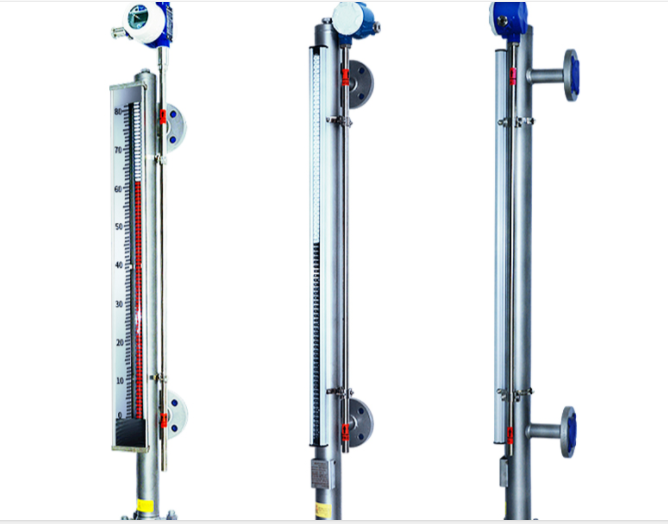BETTER TOUCH BETTER BUSINESS
Contact Sales at KAIDI.
A magnetic level gauge is a type of level sensor, a device used to measure the level of fluids. A magnetic liquid level gauge includes a “floatable” device that can float both in high and low density fluids.Magnetic Level Indicators have revolutionized the global visual indication market by offering a safer, reliable, and high-visibility alternative to common gauge glass assemblies. Utilizing a combination of proven buoyancy principles along with the benefits magnetism, Magnetic Level Indicators can be customized to fit virtually any process connection arrangement on the vessel.
Magnetic level gauges are increasingly preferable to alternative level measurement systems owing to their improved thermodynamic resistances over apparatuses such as sight gauges. They can withstand high process temperatures and are optimized for high pressure applications.All of our products are engineered and manufactured in accordance with the applicable global and regional design standards required, including ASME , PED, CRN, EAC (Gost), and other.
The magnetic level indicator working principle is widely used in level instrumentation. The interaction between float magnets inside the chamber and magnetic flags outside the chamber provide virtually maintenance-free, continuous level information. This type of level indicator doesn’t require power, making it ideal for a variety of applications across industries.
The magnetic level indicator working principle is based on the effects that one magnet has on nearby magnets. The mechanics are simple yet very effective, yielding reliable and repeatable level information for continuous monitoring and recording of fluid levels.

The working principle behind a magnetic level gauge with transmitter is that the measuring instrument shares the same fluid — and therefore, the same level — as the vessel. The level indicator is attached to the vessel and connects directly with the fluid to be measured. Within the chamber is a float with a magnet assembly inside. This float rests on the fluid’s surface. As the fluid level rises or falls, so does the float. As the float moves up or down, the magnet assembly rotates a series of bi-color magnetic flags or flaps, changing the visual indicators mounted just outside the chamber from one color to the other.
Since the magnetic level gauge working principle relies on the interaction between magnets, these level measuring instruments do not need a power source. They are also virtually maintenance-free. An additional advantage: The indicator’s magnetic force can affect optional switches or transmitters mounted outside of the chamber. The colored flags are easy to see, even from a distance, and are paired with a scale for precise readings. As for any level instrumentation, the size and material of the float are chosen according to the media, temperature, pressure, and density of the process media.
Refinery and chemical industries
Energy and power plant technology
Feed water heaters and boilers
Oil and gas industries
Offshore exploration and drilling
Pipeline compressor applications
Pulp and paper.
Kaidi magnetic level indicators manufacturers has over 10 years of experience in this field, we manufacture a complete line of high-quality magnetic level indicators that provide years of accurate level information. The float in each magnetic level indicator is designed for each application. The materials of the float magnet are carefully chosen to minimize the size of the float and the chamber, and to provide the best coupling for the particular pipe wall material and thickness.
We are here to help you! If you close the chatbox, you will automatically receive a response from us via email. Please be sure to leave your contact details so that we can better assist